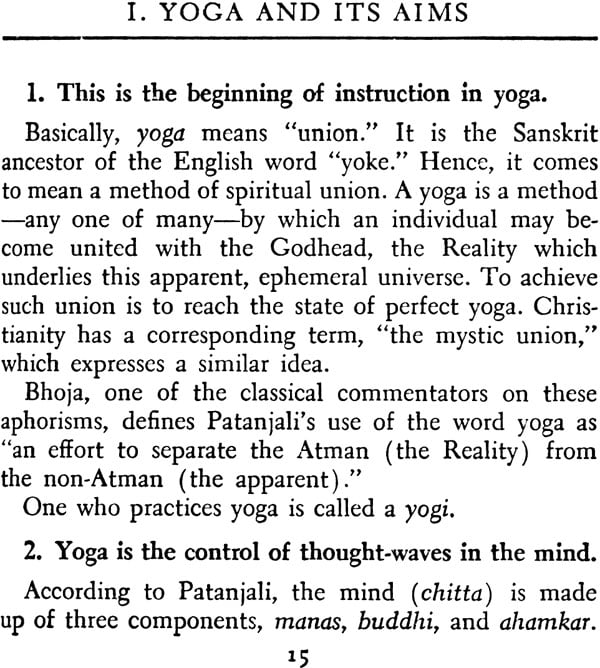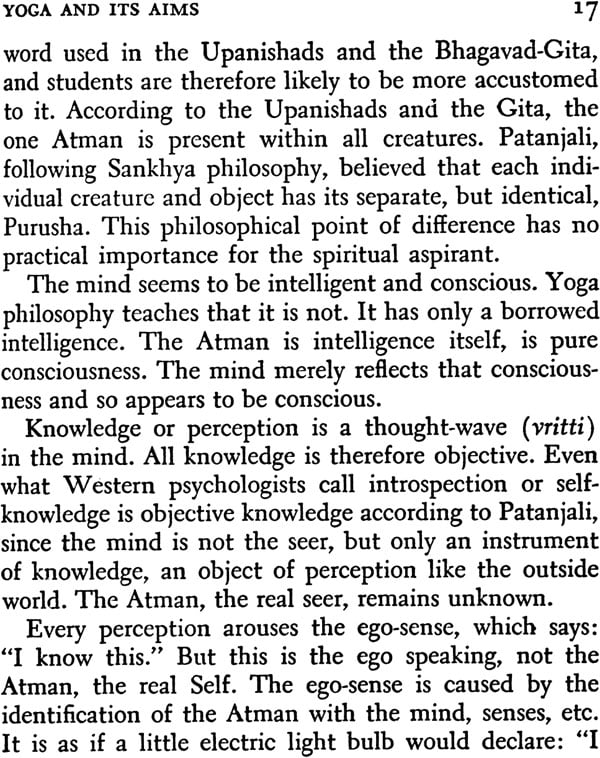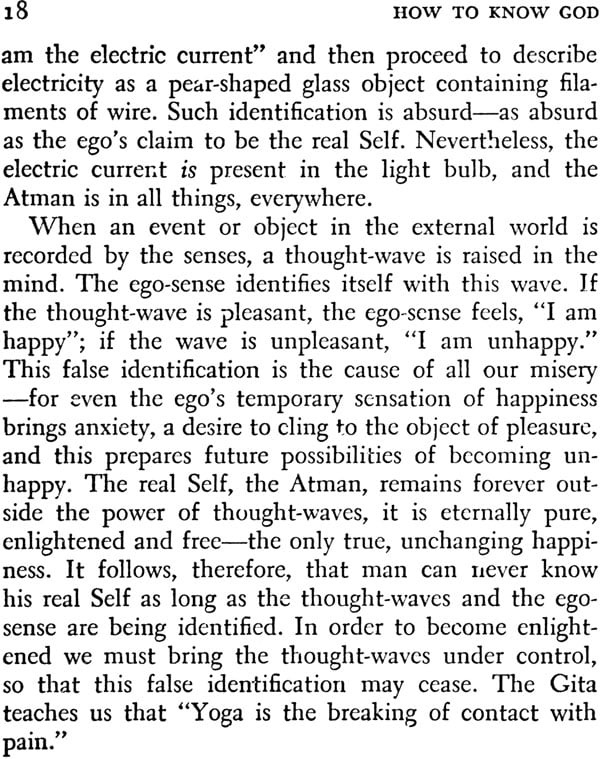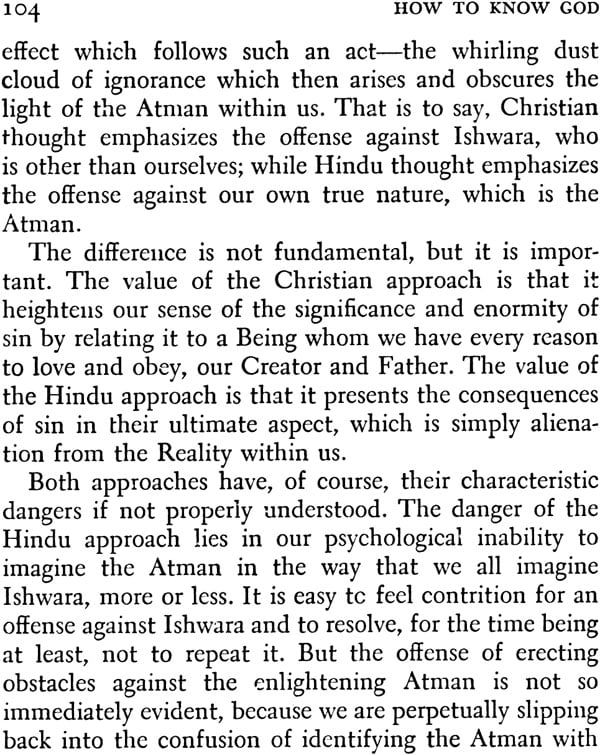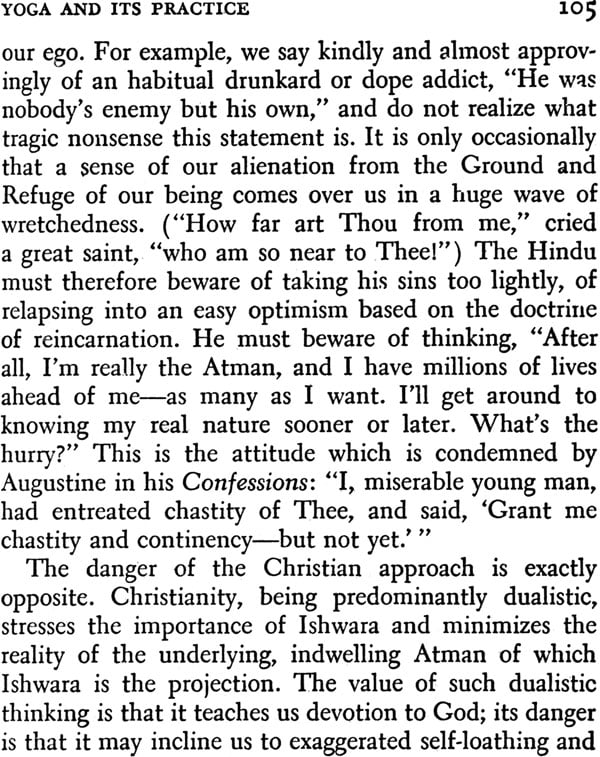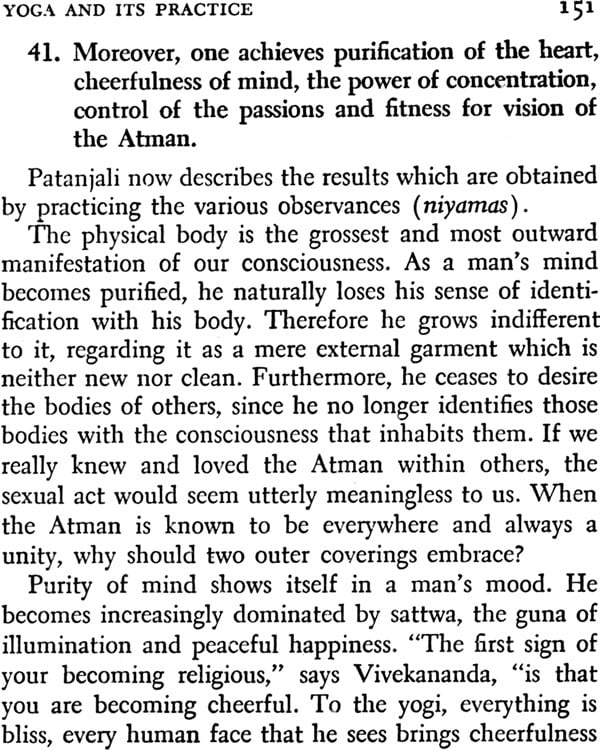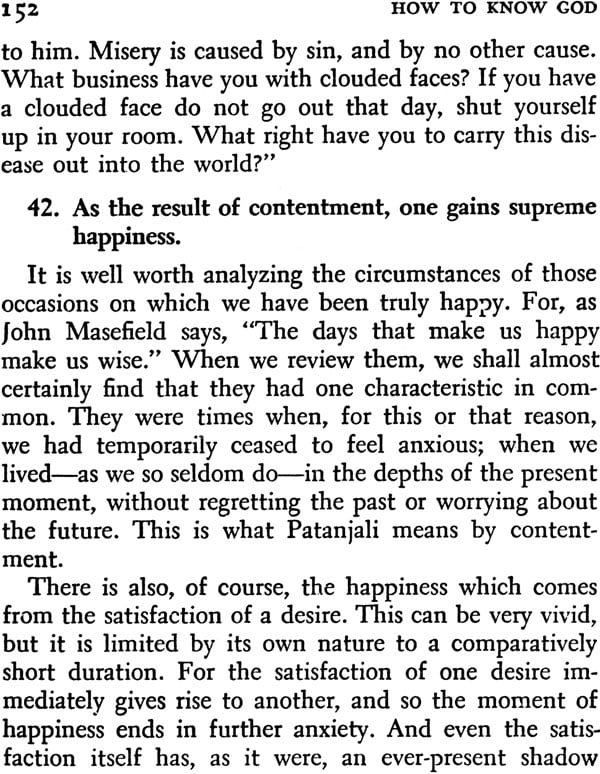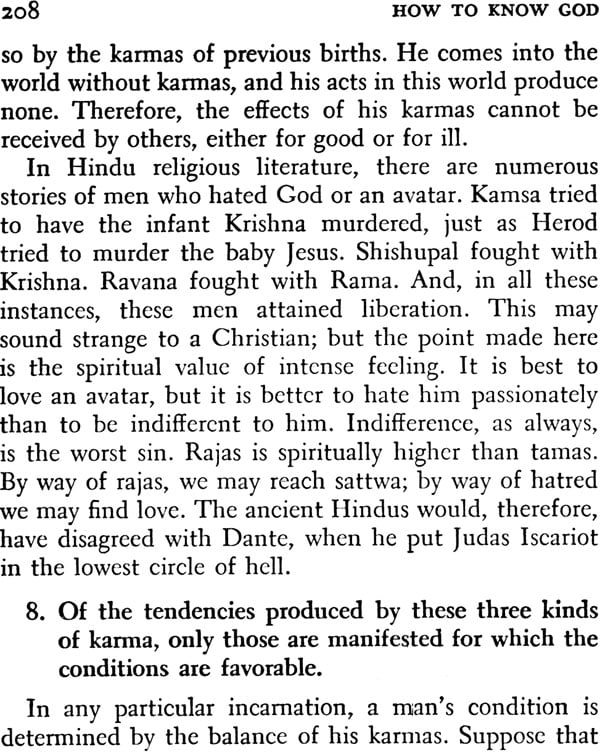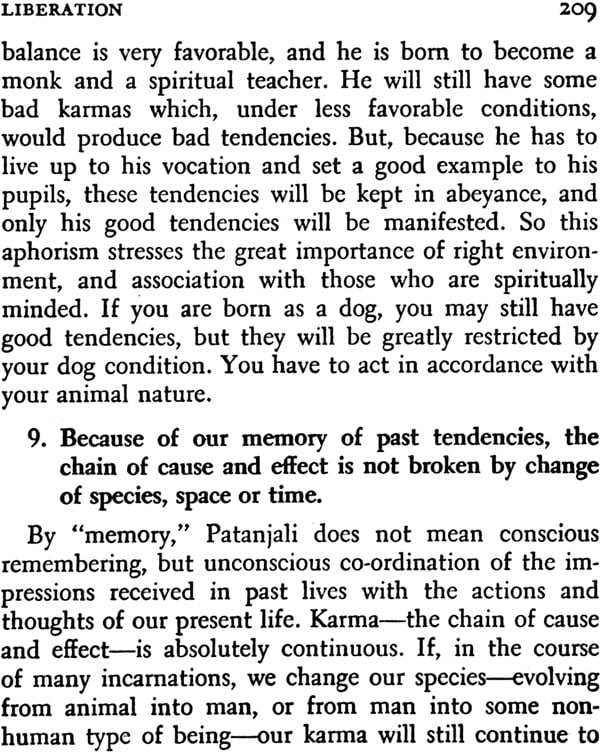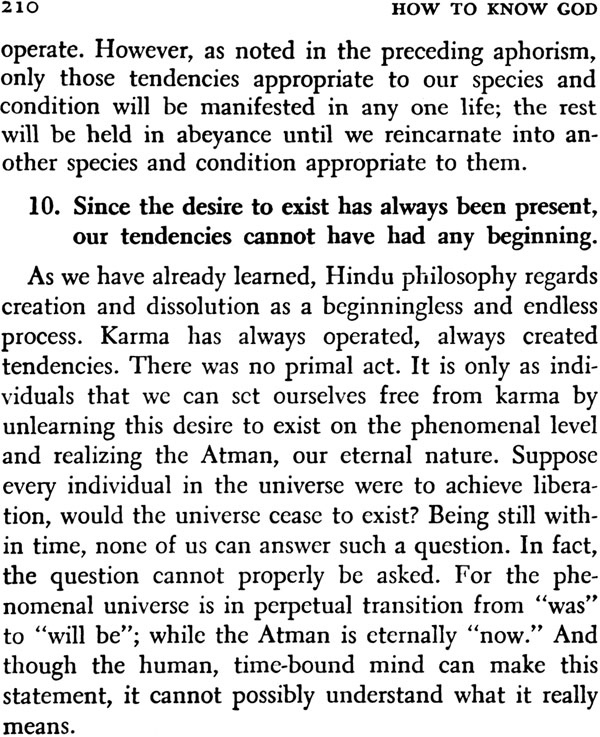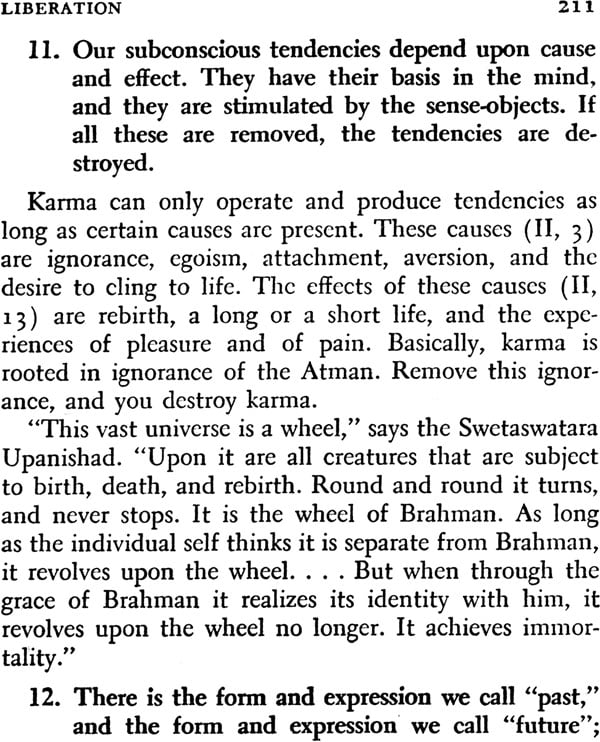
Yoga Sutras (The Yoga Aphorisms of Patanjali)
Book Specification
| Item Code: | NAN315 |
| Author: | Swami Prabhavananda and Christopher Isherwood |
| Publisher: | PILGRIMS PUBLISHING,VARANASI |
| Language: | English |
| Edition: | 2012 |
| ISBN: | 9788177692860 |
| Pages: | 226 |
| Cover: | Paperback |
| Other Details | 5.5 inch X 4.0 inch |
| Weight | 130 gm |
Book Description
We are truly grateful to you for accepting this book of the Yoga Sutras.
A book of this magnitude and wealth seldom comes, and can only be destined for a chosen few.
Can it be possible that a book so small contains such immense wealth that it actually has such a deep impact on your mind set?
Could it help you to re-write your own story?
That is for you to examine.
Read carefully, it could initiate your process of self observation, monitoring your mind whilst at the same time re-analysing your emotions.
To some, this could be a trigger to self evolution. And for us, the knowledge that we have provided you to trigger this will give us a sense of bliss which is the very essence of the Yoga Sutras.
Patanjali's Yoga Sutras (Aphorisms) are not the original exposition of a philosophy, but a work of compilation and reformulation. References to yoga practices-spiritual disciplines and techniques of meditation which enable a man to achieve unitive knowledge of the Godhead-are to be found, already, in the Katha, Swetaswatara, Taittiriya, and Maitrayani Upanishads, very many centuries earlier. Indeed, the yoga doctrine may be said to have been handed down from prehistoric times.
What Patanjali did was to restate yoga philosophy and practice for the man of his own period. But what was his period? And who was Patanjali? Hardly anything is known about him. Some authorities believe that there 'were actually two Patanjalis, one a grammarian and the other the author of the Sutras. Others deny this. As for the date of the Sutras, the guesses of scholars vary widely, ranging from the fourth century B.C. to the fourth century A.D.
The simplest meaning of the word sutra is "thread." A sutra is, so to speak, the bare thread of an exposition, the absolute minimum that is necessary to hold it together, unadorned by a single "bead" of elaboration. Only essential words are used. Often, there is no complete sentence-structure. There was a good reason for this method. Sutras were composed at a period when there were no books. The entire work had to be memorized, and so it had to be expressed as tersely as possible. Patanjali's Sutras, like all others, were intended to be expanded and explained. The ancient teachers would repeat an aphorism by heart and then proceed to amplify it with their own comments, for the benefit of their pupils. In some instances these comments, also, were memorized, transcribed at a later date, and thus preserved for us.
In this translation we have not only provided a commentary but expanded and paraphrased the aphorisms themselves, so that each one becomes an intelligible statement in the English language. Certain other translators have been unwilling to take this liberty, and have therefore offered a version of the text which is approximately literal, but as cryptic as a professor's lecture notes. It cannot be understood at all until its commentary has been carefully studied. We believe that this kind of translation has a bad psycho-logical effect on the reader. Being, at first glance, unable to make anything of the aphorisms themselves, he is apt to decide that the whole subject is too difficult for him. Enough difficulties exist anyway in the study of yoga philosophy. It has been our aim not to increase them unnecessarily.
Our commentary is mainly our own work. However, we have followed the explanations of the two ancient commentators, Bhoja and Vyasa. We have also quoted frequently from the brilliant and deeply intuitive comments of Swami Vivekananda. These comments were made extempore during the classes on Patanjali which the Swami held in the United States more than fifty years ago. They were written down by his students, and are included in his book on Raja Yoga.
Since yoga, prior to Patanjali, was originally grounded in Vedanta philosophy, we have interpreted the aphorisms, throughout, from a Vedantist viewpoint. In this we differ from Patanjali himself, who was a follower of Samkhya philosophy. But these are merely technical differences, and it is best not to insist on them too strongly, lest the reader become confused. They are briefly explained at appropriate points in our commentary.
In general, we have wished to present this book as a practical aid to the spiritual life; an aid that can be used by the devotees of any religion-Hindu, Christian, or other. We have therefore avoided dwelling much on its metaphysical and occult aspects. The study of these may fascinate some types of mind, but it is ultimately sterile and may even be dangerous if carried to excess. It was suggested to us, while we were working on the book, that we should introduce into it a comparison of yoga and modern Western psychology. Such a comparison has already been attempted by various writers, and some interesting points of similarity and dissimilarity in theory and technique have been noted. But, from our point of view at least, the comparison in itself seems neither fair nor valid. Yoga psychology is a finished product. Western psychology is still developing, and along several divergent lines; continually producing new theories and discarding old ones. If one says categorically: "Western psychology holds this view....," one is always in danger of being reprimanded for inaccuracy.
We may, however, make one statement safely. The majority of Western psychotherapists do not, as yet, recognize the existence of the Atman, the Godhead within man; and do not, therefore, attempt to help their patients achieve the union of perfect yoga. As for those psychotherapists, now becoming quite numerous, who take a serious interest in yoga, many of them would no doubt state their position somewhat as follows: "We can help our patients to a certain point-to an adequate degree of adjustment on the psychophysical level. Beyond that, we're not ready to go. We recognize the possibility of a higher, spiritual integration, but we prefer not to make it a part of our therapy, because we believe that the two should be kept separate. If a patient wants spiritual integration, we can only send him to a yoga teacher or a minister of religion. Where we leave off, yoga begins."
And there, for the present, the problem rests.
In conclusion, we must gratefully acknowledge the permission given us to quote from the following books: Erwin Schrodinger's What Is Life?, published by the Cambridge University Press; the volume containing The Way of a Pilgrim and The Pilgrim Continues His Way, translated by R. M. French and published by the Society for Promoting Christian Knowledge, of London; the Bhagavad-Gita, translated by the present authors and published by Harper & Brothers; and the following works published by the Vedanta Press of Hollywood: Shankara's Crest-Jewel of Discrimination (Prabhavananda-Isherwood ) , The Eternal Companion (Prabhavananda), and the Upanishads (Prabhavananda- Manchester).
Contents
| Translaor's Foreword | 7 | |
| I | Yoga and its Aims | 15 |
| II | Yoga and its Practice | 95 |
| III | Powers | 175 |
| IV | Liberation | 202 |
| Words Expained and Subjects Discussed in the Text | 223 |
Sample Pages
